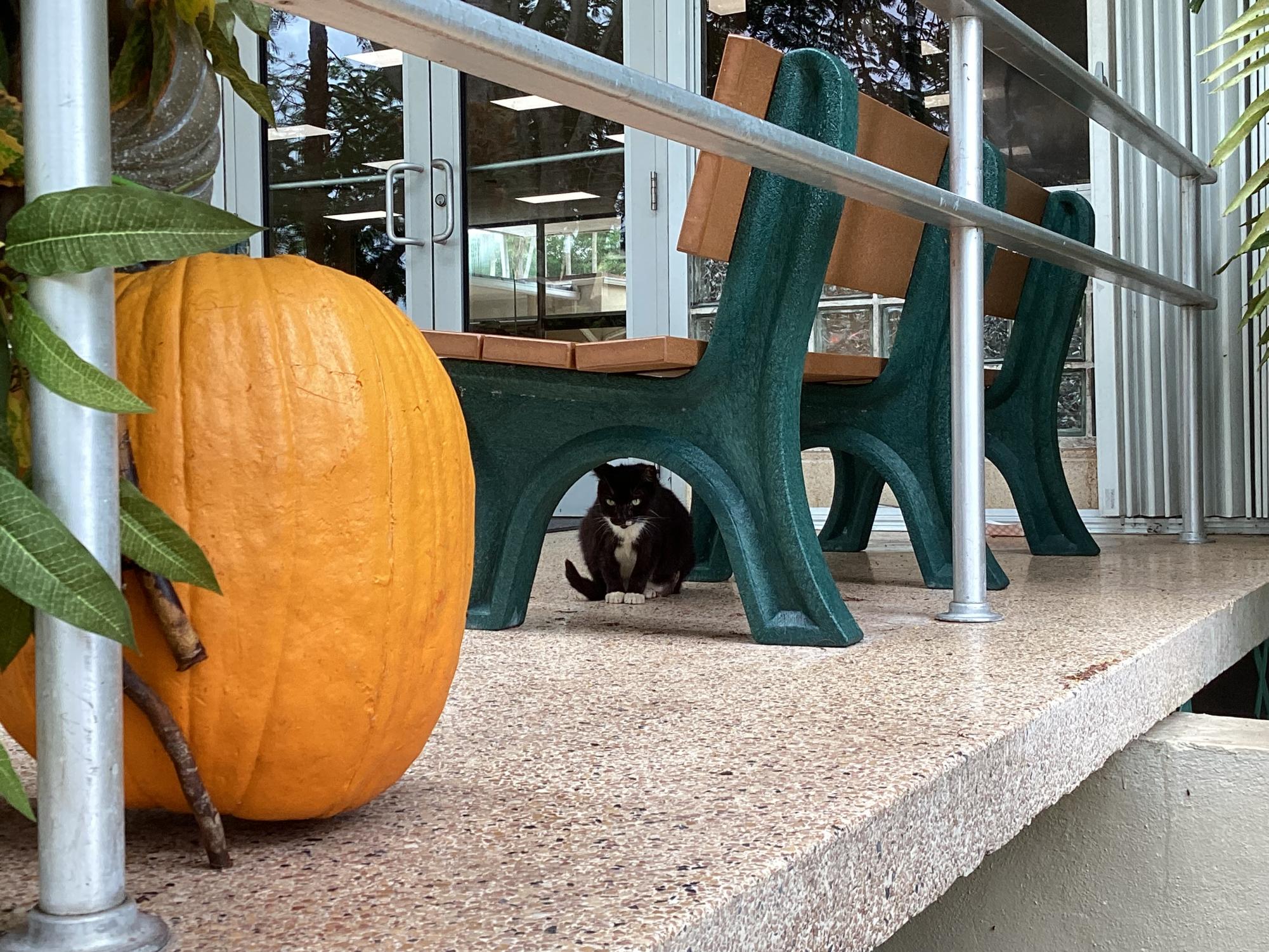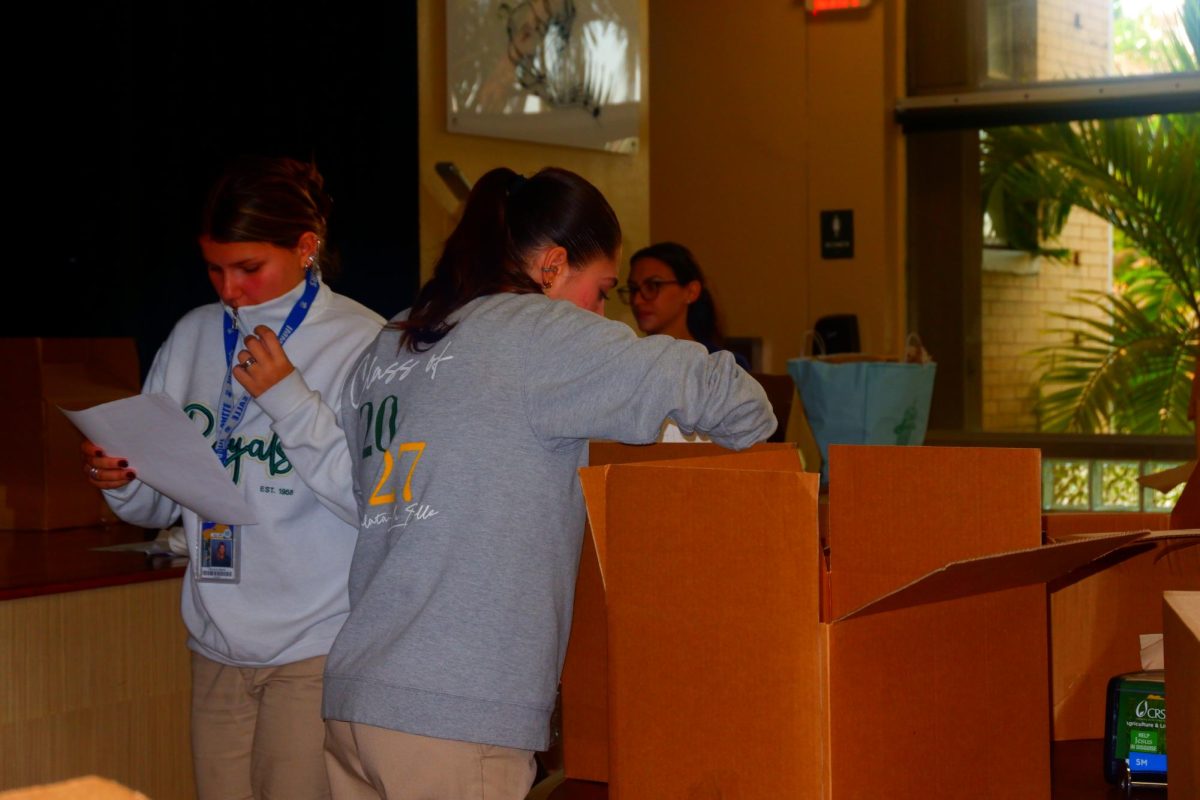Have you ever seen the small furry creatures that linger by the cafeteria door or the first floor main building hallway? If you have, you have been lucky enough to spot one of ILS’s campus cats! ILS has an array of animals residing on campus that add a unique twist to the diverse atmosphere with cats being one of those animals.
Currently, there are three regulars that stake out Sage’s disposal bins and the main building, but ILS can also attract tourists and gain temporary visitors to this campus zoo.
“I always see two cats around the Mary statue in the main building. I caught them fighting; it was funny. The champion was the black cat,” said senior Gabriel Ferrer.
There seems to be a competitive hierarchy between the creatures, causing cat fights on campus. As to whether the black cat remains the champion will be something ILS students need to be on the watch for.
It is assumed the cats’ rate ILS’s living accommodations favorably as they continue to return and eat from bowls left adjacent to the cafeteria doors, a welcoming gift from the ILS staff for the tiny animals.
Apparently, ILS isn’t alone in the cat invasion as Miami-Dade as a whole is experiencing a cat takeover.
“ ,” Humane Society of Greater Miami
Their early breeding abilities and abundant liters raise serious questions residents should start considering. Where are all these cats going to reside? Will this cause more roadkill? Will the cat population out-number humans? Are they going to start demanding housing?
With all these very genuine concerns, you begin to wonder how cats arrived to Miami, Florida in the first place. Here is a hint: It’s the rat’s fault!
“In 1912 the city’s (Miami Beach) first mayor, John Newton Lummus, advertised for cats to help deal with the island’s rat population. After receiving “bags full of cats,” the mayor released them on the beach. Soon the rats were gone, but the cats remained — and multiplied.” (bettercitiesforpets.com)
Thank you, Mr. Lummus for populating Miami with these cute critters, but what can Miami and Miami Beach do now? The homeless cat population is growing and it seems locals are just going to be subjects to their coup.
Wait, there might be hope after all with the TNR program.
“You can help by taking community cats in your neighborhood through a TNR (Trap-Neuter-Return) program. TNR is a method of spay/neuter for outdoor, free-roaming cats.” (York County SPCA)
That was a close call, but now with more people in the community engaging in this program, the cat crisis might be solved! Of course, ILS loves the campus cats, but you can never be too safe when it comes to cats. Everyone knows they are secretly smart; they just don’t want to pay taxes.
For more information, visit https://www.miamidade.gov/global/animals/home.page
According to Miami-Dade’s Animal Services site, Miami-Dade County Animal Services (Animal Services) takes in about 30,000 dogs and cats each year, regardless of age, breed, medical condition, or temperament. The stray and abandoned animals in our care receive high-quality veterinary care. Animal Services first achieved their lifesaving status in 2015.








